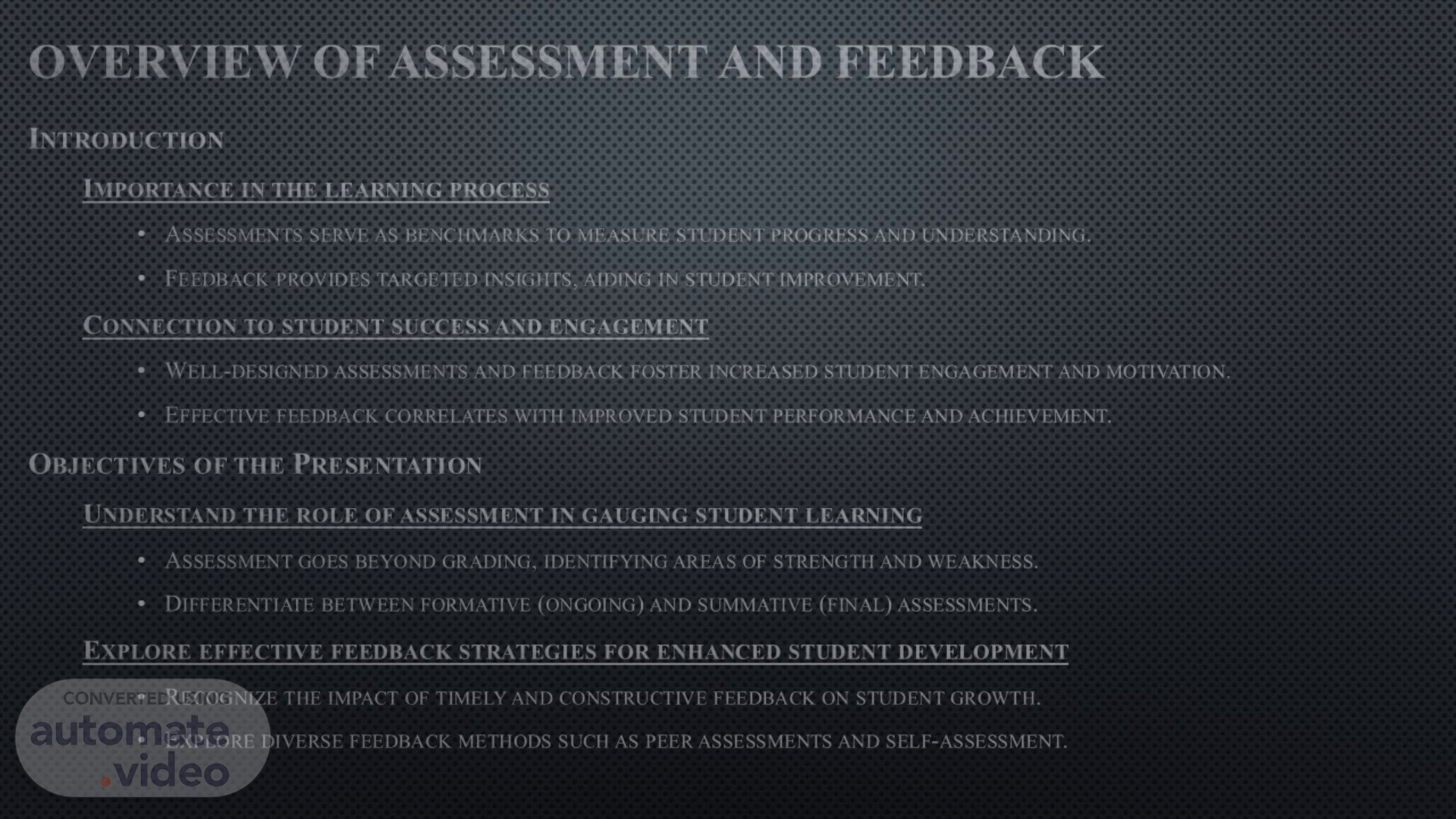
Page 1 (0s)
[Audio] Assessments are benchmarks measuring progress; feedback guides improvement. Link between well-designed assessments, feedback, and increased student engagement and success. Assessments go beyond grading, identifying strengths and weaknesses. Explore diverse feedback methods, such as peer and self-assessment..
Page 2 (30s)
[Audio] Ongoing evaluations, like discussions and quizzes, inform immediate instructional adjustments. Evaluation at the end, such as final exams and projects, gauges overall understanding. Real-world tasks, like case studies and simulations, mirror professional scenarios. Ongoing evaluations, including assignments and reflections, provide a holistic view..
Page 3 (1m 5s)
[Audio] Timely feedback allows students to apply insights immediately. Constructive feedback focuses on strengths and offers guidance for improvement. Encourages collaboration and diverse perspectives. Implement with clear guidelines for constructive criticism. Fosters metacognition and self-reflection. Encourages goal-setting and a growth mindset. Digital tools speed up the feedback process and allow for multimedia formats. Examples include learning management systems and video/audio feedback tools..
Page 4 (1m 44s)
[Audio] The key takeaways are, the assessment and feedback are essential for student success. Diverse strategies cater to different learning styles. Blend formative and summative assessments for a comprehensive view. Authentic and continuous assessments mirror real-world scenarios. Peer and self-assessment promote student ownership and continuous improvement. Technology enhances feedback but should be balanced with a human touch. Regularly revisit and adapt strategies for an enriching learning experience. Thank you for your attention! Feel free to ask questions or share insights..